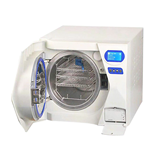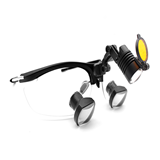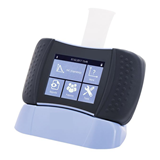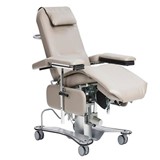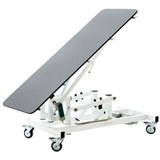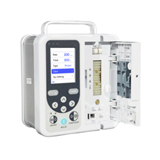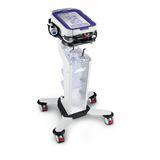Learn how to finance and budget your new vet clinic in Australia. Explore fitout costs, loan options, cash flow tips and government support.
Key takeaways
- Fitout costs: Full veterinary clinic fitouts in Australia range from $150,000 to $500,000+, depending on location, size, equipment, and compliance needs.
- Financing options: Common options include chattel mortgages, medical equipment leasing, and low-doc business loans. Rates range from 6.5% to 9.5% p.a..
- Budget allocation: Expect to allocate 40–60% to clinical fitout, 20–30% to equipment, and 10–20% to compliance, IT and furnishings.
- Government support: While rare, some grants and regional business incentives exist—particularly in rural or underserved areas.
- Cost-saving tips: Consider leasing non-essential equipment, using modular or phased construction, and reusing compliant existing infrastructure to reduce upfront costs.
- Cash flow planning: Aim for at least 6–9 months of working capital buffer, including staff salaries, utilities, and consumables.
Introduction
Setting up a new veterinary practice in Australia is both an exciting and demanding venture. Beyond finding the right location and securing council approvals, financing and budgeting are among the most crucial elements of ensuring your clinic is viable, compliant, and profitable from day one. Fitout costs can vary widely, and choosing the wrong loan structure or overspending in early stages can restrict your ability to grow.
This guide walks you through everything you need to know about budgeting for a veterinary fitout and accessing the right finance in Australia. Whether you're opening a general practice or a specialty clinic, you'll find actionable strategies and accurate costings to make informed, future-proof decisions.
Understanding veterinary fitout costs in Australia
Typical cost ranges
- Small general practice clinic (under 120m²): $150,000 to $250,000
- Mid-sized clinic (150–200m²): $250,000 to $400,000
- Full-service or specialty clinic: $400,000 to $500,000+
Main cost drivers:
- Medical equipment: Anaesthesia machines, diagnostic imaging, surgical tables
- Clinical fitout: Flooring, partitioning, plumbing, air filtration, lead shielding
- Compliance upgrades: Disability access (DDA), fire safety, radiation protection
- IT and admin setup: Practice management software, network cabling, reception areas
- Design and approvals: Vet-specific architectural design, local council DA/CDC fees
Financing options for veterinary fitouts
1. Chattel mortgage
- Best for: Owners wanting long-term ownership of equipment and fitout assets
- Terms: 1 to 7 years, fixed or variable rates
- Pros: Full tax depreciation, ownership from day one, GST claims on BAS
- Cons: May require strong credit and detailed financials
2. Equipment leasing
- Best for: Clinics wanting to preserve cash flow while accessing latest equipment
- Terms: 2 to 5 years, often with buyout option at end
- Pros: Lower upfront cost, maintenance often included
- Cons: You don’t own the asset during lease term
3. Low-doc and no-doc loans
- Best for: New practices with less than 24 months trading history
- Terms: Usually capped at $150,000 to $250,000
- Pros: Fast approvals, minimal paperwork
- Cons: Higher rates (typically 9%+), personal guarantee often required
4. Fitout-specific loans (via specialist lenders)
Some lenders offer dedicated medical and veterinary fitout finance, bundled with staged drawdowns. This reduces interest on undrawn funds and matches cash flow to construction milestones.
Budgeting tips to keep costs under control
1. Create a phase-based construction plan
- Split the build into essential and non-essential areas.
- Prioritise revenue-generating zones like consult rooms, surgery, and diagnostics.
- Delay cosmetic or expansion fitouts until cash flow stabilises.
2. Consider refurbished or second-hand equipment
- Certified used equipment (e.g. X-ray, cages, dental units) can save 30–50%.
- Ensure compliance with Australian standards before purchasing.
3. Work with vet-specific designers and builders
- They understand workflow, infection control, and compliance better than general trades.
- Saves money long-term by avoiding retrofits or non-compliant finishes.
4. Maximise your depreciation schedule
- Fitouts, furniture, and plant & equipment can be depreciated.
- Speak with an accountant to structure purchases tax-effectively.
5. Reuse infrastructure where possible
- Former medical or dental spaces may already have compliant plumbing and electrical services.
- This can save tens of thousands in base build costs.
Cash flow planning for your new practice
- Working capital target: At least 6 months of expenses to cover:
- Staff wages
- Medical consumables
- Rent and utilities
- Marketing and local launch
- Consider finance for fitout + working capital combined. Many lenders now offer blended loans.
- Use practice management software to monitor overheads and streamline invoicing and payment workflows.
Cost breakdown by room or function
Understanding how your fitout budget is allocated across different clinic areas helps you plan more effectively and prioritise spending where it matters most. Here’s a typical cost breakdown by room or function for veterinary practices in Australia:
- Consultation rooms: These spaces require cabinetry, benching, storage solutions, and durable, hygienic surfaces. Expect to allocate around 15–20% of your total fitout budget here to ensure efficient workflows and professional presentation.
- Surgical suite: The surgery is one of the most critical areas, requiring specialised lighting, sterile storage units, and an ergonomic operating table. Due to its technical complexity and compliance requirements, this area often accounts for 20–30% of fitout costs.
- Imaging room (X-ray/ultrasound): Imaging rooms must meet strict regulatory standards, including lead shielding, compliant flooring, and appropriate ventilation. Fitout costs for this room typically range between 10–15% of your overall budget.
- Kennels and recovery area: These areas need secure, well-ventilated enclosures with soundproofing to ensure animal comfort and safety during recovery. Budget around 10–15% here, depending on capacity and equipment quality.
- Reception and waiting area: This front-of-house space influences client experience, so consider customer flow, seating comfort, and point-of-sale (POS) integration. Allocate approximately 10–15% of your budget to ensure a welcoming and functional reception.
Why this matters:
Breaking down your budget by room or function allows you to visualise expenses in manageable stages. It helps identify priority areas for investment, avoid overspending in less critical zones, and plan phased fitouts aligned with cash flow and operational needs.
Government incentives and grants
While there are few direct grants for vet clinic setup, you may be eligible for:
- Regional investment funding: Through state government business support packages
- Rural health infrastructure grants: In some states where animal health services are underserved
- Energy efficiency rebates: For clinics installing solar, efficient HVAC, or insulation upgrades
Check business.gov.au and state-based grant portals.
FAQs: Financing and budgeting for vet practice fitouts
Q: How much should I budget per square metre for a vet clinic fitout?
Expect to pay between $1,500 and $2,800 per m², depending on clinical complexity, location, and compliance requirements.
Q: Can I finance both the fitout and the medical equipment together?
Yes. Many lenders offer bundled medical finance that covers both physical build costs and major equipment in a single agreement.
Q: How long does it take to secure fitout finance?
It depends on your financials. For new clinics, expect 1–3 weeks from application to approval. Low-doc options can be approved in as little as 48 hours.
Q: Are there tax benefits for leasing equipment?
Yes. Lease payments may be fully deductible as operating expenses. Always check with your accountant.
Q: Is it better to lease or buy vet equipment?
It depends on cash flow and tech needs. Lease high-tech or fast-depreciating equipment, but buy long-life essentials (e.g. cages, tables).
Q: What if I’m fitting out in a leased property?
Ensure your lease includes a "make good" clause review. Consider fitout finance structures that match the lease term.
Final thoughts
Opening a new vet practice in Australia is a major investment, but smart budgeting and tailored financing can make the process smoother and more profitable. Understand your costs, explore multiple finance options, and work with specialists who understand veterinary compliance and workflow. With a clear financial plan in place, you can focus on building a clinic that delivers outstanding care and sustainable growth from day one.
If you’re ready to start exploring finance options, speak to an equipment finance broker who understands the veterinary space. They can help you structure repayments to suit your growth path and reduce financial pressure early on.










